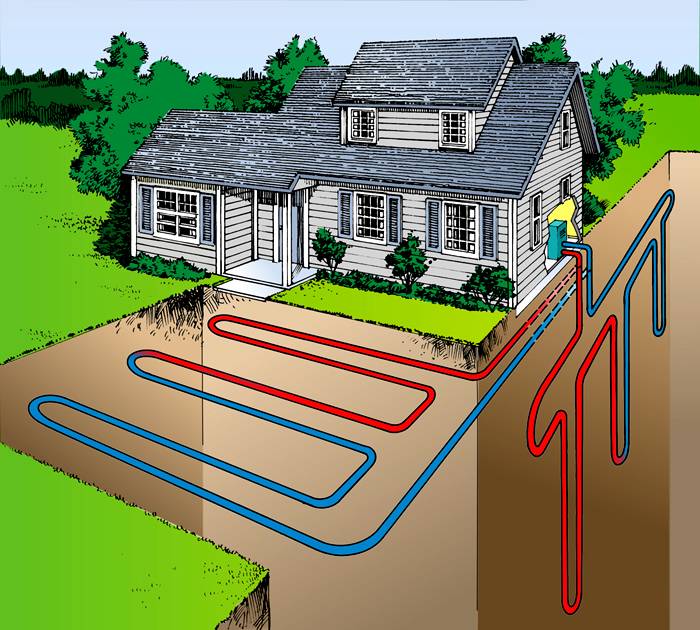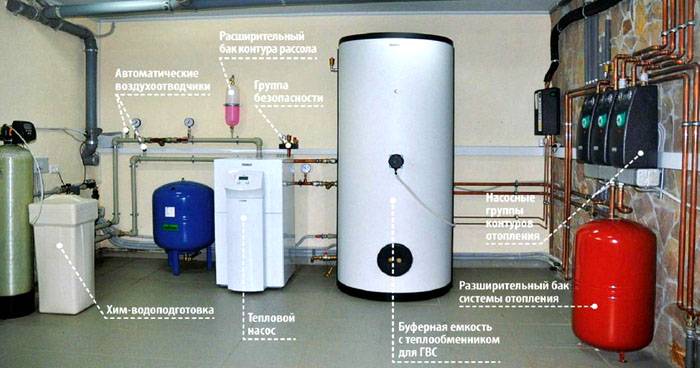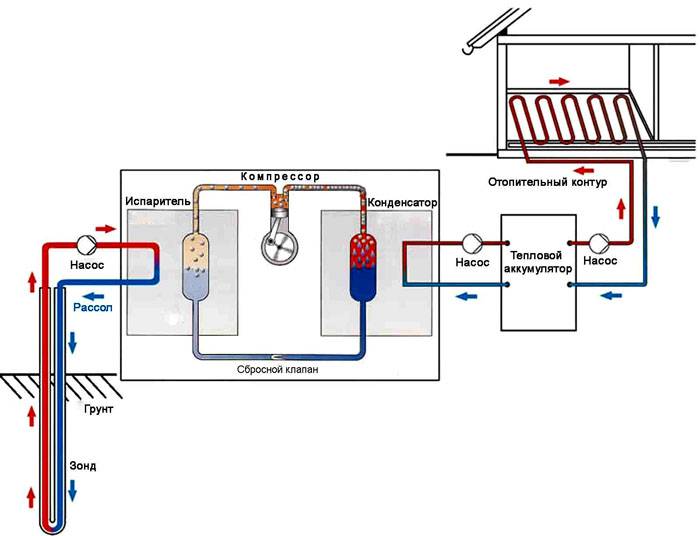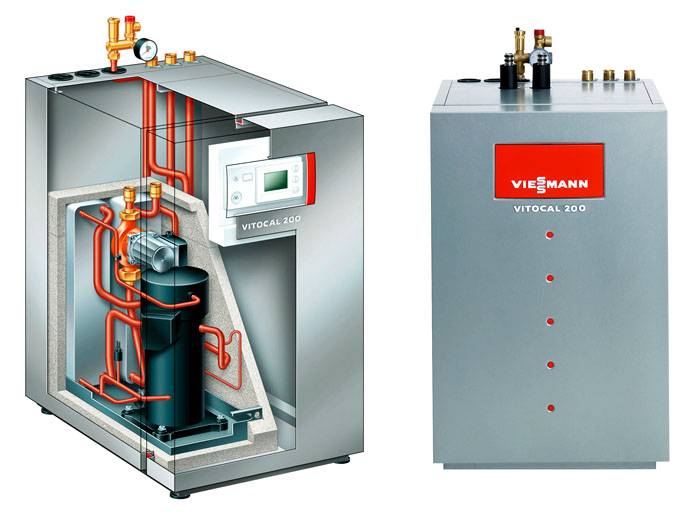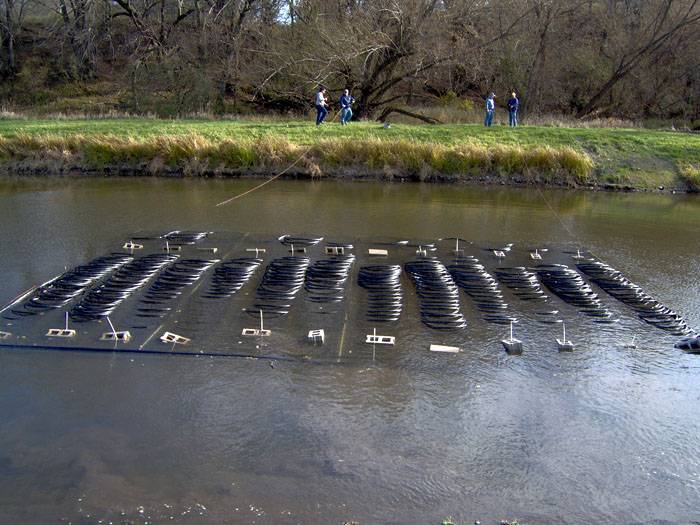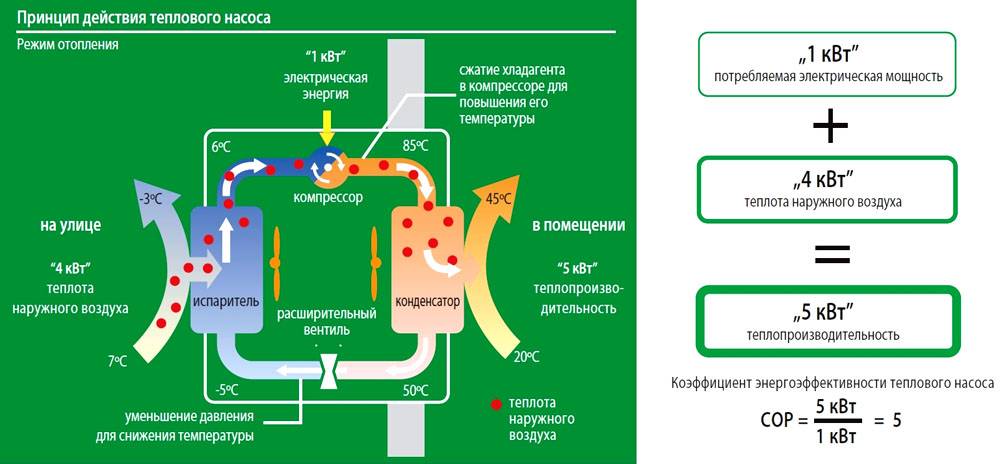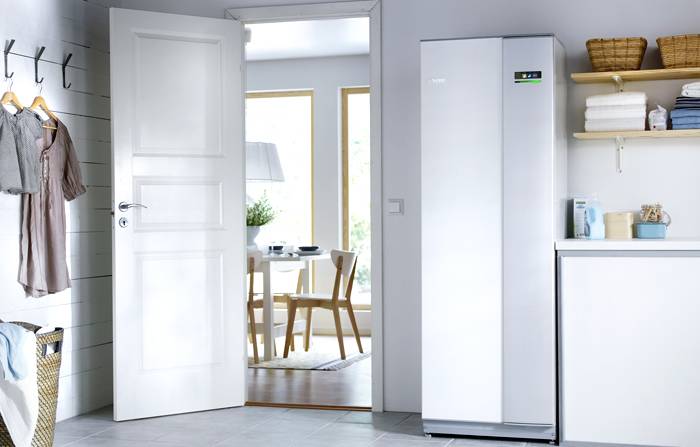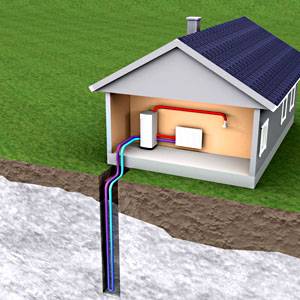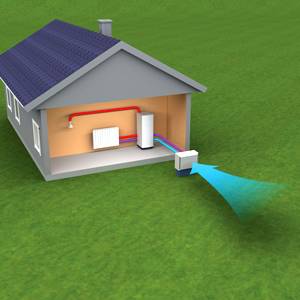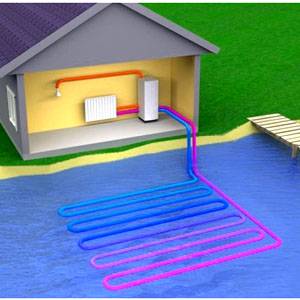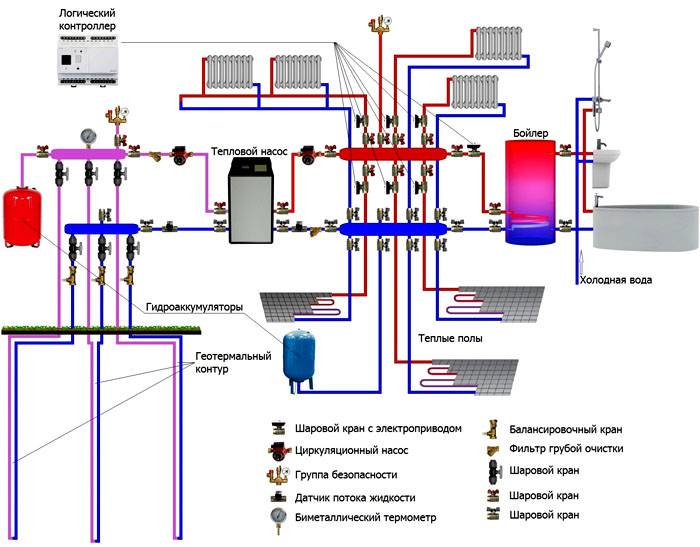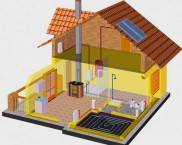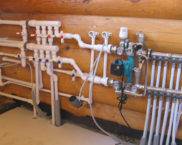How to choose a heat pump for home heating: prices, types, installation basics
Extraction of heat from soil and water sources is not such a novelty. The Western world has long used geothermal energy to heat homes. This topic is becoming more and more relevant as prices for public utilities rise. A heat pump for home heating makes it possible to warm up the batteries in an environmentally friendly, safe and free way.
The content of the article
Heat pump for home heating: principle of operation, advantages and disadvantages
An example of a device like a heat pump is in every home - this is a refrigerator. It generates not only cold, but also heat - this is noticeable by the temperature of the rear wall of the unit. A similar principle is laid down in a heat pump - it collects thermal energy from water, earth and air.
Principle of operation and device
The system of the device is as follows:
- water from a well or reservoir passes through an evaporator, where its temperature drops by five degrees;
- after cooling, the liquid enters the compressor;
- the compressor compresses the water, increasing its temperature;
- the heated liquid moves to the heat exchange chamber, where it gives off its heat to the heating system;
- cooled water returns to the beginning of the cycle.
Heating systems based on heat pump installations have three components:
- A probe is a coil located in water or land. It collects heat and transfers it to the device.
- A heat pump is a device that extracts thermal energy.
- The heating system itself, which includes a heat exchange chamber.
Pros and cons of the device
First, about the positive aspects of such heating:
- Relatively low energy consumption. Only electricity is consumed for heating, and it will be required much less than, for example, heating with the help of electrical appliances.In heat pumps, there is a conversion factor indicating the output of thermal energy in relation to the consumed electrical energy. For example, if the value "ϕ" is 5, it means that 5 kilowatts of heat energy will be required for 1 kilowatt per hour of electricity consumption.
- Versatility. This heating system can be installed in any location. This is especially true for remote areas where there are no gas pipelines. If it is impossible to connect electricity, the pump can run on a diesel or gasoline engine.
- Full automation. There is no need to add water to the system or monitor its operation.
- Environmental friendliness and safety. The heat pump unit does not produce any waste or gases. The device cannot accidentally overheat.
- Such a unit can not only heat a house in winter at an air temperature of up to minus fifteen degrees, but also cool it in summer. These functions are available in reversible models.
- Long period of operation - up to half a century. A compressor may need to be replaced about once every twenty years.
This system also has its drawbacks, which cannot be ignored:
- Prices. A heat pump for home heating is not a cheap pleasure. This system will pay off not earlier than in five years.
- In areas where the winter temperature drops below fifteen degrees below zero, additional heat sources (electric or gas) will be required for the device to function.
- The system, which takes heat energy from the ground, disrupts the ecosystem of the site. The damage is not significant, but this should be taken into account.
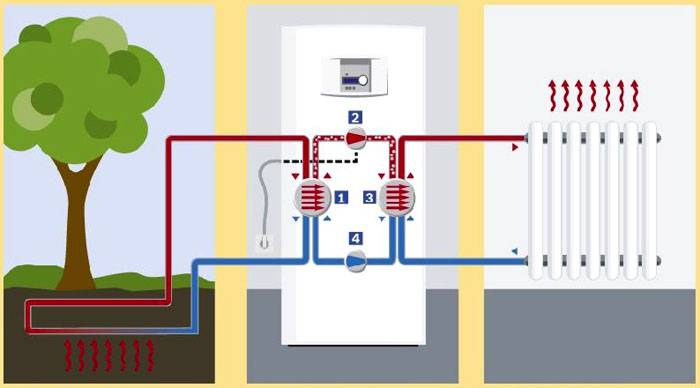
The device takes heat from the soil, lowering its temperature, this can adversely affect the root system of trees and shrubs

Which pump to choose
Installations differ in the source of thermal energy and the method of its transmission. There are five main types:
- Water-air.
- Ground-water.
- Air to air.
- Water-water.
- Air to water.
Site survey
Before installing the heating system, it is important to investigate the features of the site. This research will help determine which thermal energy source is the best option. The easiest way is if there is a reservoir next to the house. This fact will free you from the need to carry out earthworks. Another practical solution is to use an area where the wind is constantly blowing. If there is neither one nor the other, you will have to stop at earthworks.
The heating system can have two installation options:
- using probes;
- with the installation of an underground collector.
Ground-water pump and installation options
Geothermal probes are usually installed in a small area that does not allow a large pipeline to be laid. To install this system, drilling equipment will be required, since the depth of the wells must be at least one hundred meters, and the diameter must be twenty centimeters. Probes are lowered into such wells. The number of wells affects the performance of the heating system.
If the site is large enough, drilling can be dispensed with and a horizontal system can be installed. For this purpose, the coil is buried at a depth of one and a half meters. This version of the system is considered to be the most stable and reliable.
Water-to-water pump: easy installation
A water-to-water heat pump for home heating is suitable for areas with reservoirs. For the pipeline, you can use conventional polyethylene pipes... The assembled collector is moved to the pond and there is lowered to the bottom.This is one of the cheapest installation options that you can do yourself.
Air-to-air heat pump: installation price
In an area where winds are constantly present, a system that uses air thermal energy is suitable. Installation in this case also does not require special costs, you can do it yourself. You just need to install the pump no further than twenty meters from the house in the most ventilated place.
Heat pump for home heating: prices and manufacturers
Heat pump units on the Russian market are represented by products of the following companies: Vaillant (Germany), Nibe (Sweden), Danfoss (Denmark), Mitsubishi Electric (Japan), Mammoth (USA), Viessmann (Germany). Russian manufacturers SunDue and Henk are not inferior to them in quality.
To heat a house with an area of one hundred square meters, a ten-kilowatt installation is required.
Table 1. Average cost of different types of pumps with a capacity of 10 kilowatts
The turnkey price of a heat pump is on average about 300 - 350 thousand rubles. The most budgetary option is considered to be the air-water system, since it does not require expensive earthworks.

Self-assembly
Considering the prices of heat pumps for home heating, this type of heating system cannot be called the cheapest. You can reduce costs by installing the pump yourself, but remember that improper installation is fraught with loss of device efficiency.
What you will have to face during self-installation:
- the whole system should be included in a single complex, which includes wells, a pump, hydraulic piping, automatic control, and a heating system;
- system design work should take into account the technical characteristics of the heat pump;
- the depth of thermal wells should be suitable for the power of the device; grouting will be required;
- geothermal probes operating in severe operating conditions, it is desirable to duplicate in each well;
- batteries, convectors, underfloor heating in the house must be associated with the operation of a heat pump installation for efficient heating.
Does it make sense to risk self-installation when purchasing such expensive equipment?
Thus, if a decision is made to buy a heat pump for heating a house, the price of professional installation should be included in the estimate.
From operating experience
- Underground sewers can harm garden plants, this should be taken into account when installing the system.
- The unit does not have to be installed in the basement, it can be located in the bathroom or kitchen. When installing, it should be borne in mind that the device is not silent.
- Once a week, you need to warm up the collector to sixty degrees to prevent bacteria from multiplying in the system.
Outcome
A heat pump is a rather expensive device that will pay off in at least five to seven years. But if you take into account the durability of the system, about half a century, then this is a profitable acquisition.such a device will allow you to heat the house even in the absence of gas and electricity networks. This heating system is fireproof and efficient, works in automatic mode and does not require special maintenance. But in order to achieve such results, you need to entrust the installation of equipment to professionals.
Video: do it yourself heat pump from an air conditioner



